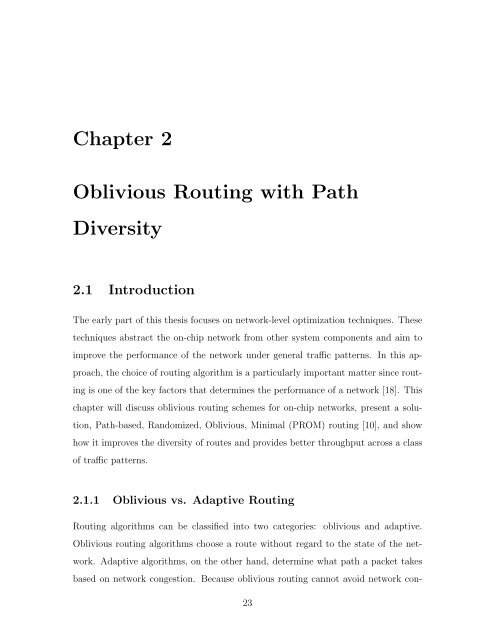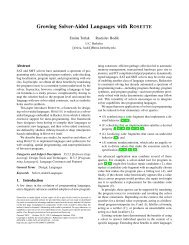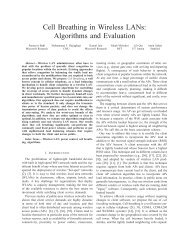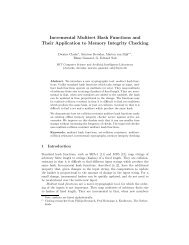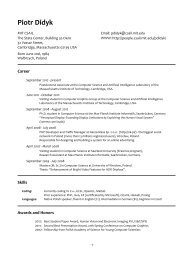On-chip Networks for Manycore Architecture Myong ... - People - MIT
On-chip Networks for Manycore Architecture Myong ... - People - MIT
On-chip Networks for Manycore Architecture Myong ... - People - MIT
Create successful ePaper yourself
Turn your PDF publications into a flip-book with our unique Google optimized e-Paper software.
Chapter 2<br />
Oblivious Routing with Path<br />
Diversity<br />
2.1 Introduction<br />
The early part of this thesis focuses on network-level optimization techniques. These<br />
techniques abstract the on-<strong>chip</strong> network from other system components and aim to<br />
improve the per<strong>for</strong>mance of the network under general tra c patterns. In this approach,<br />
the choice of routing algorithm is a particularly important matter since routing<br />
is one of the key factors that determines the per<strong>for</strong>mance of a network [18]. This<br />
chapter will discuss oblivious routing schemes <strong>for</strong> on-<strong>chip</strong> networks, present a solution,<br />
Path-based, Randomized, Oblivious, Minimal (PROM) routing [10], and show<br />
how it improves the diversity of routes and provides better throughput across a class<br />
of tra c patterns.<br />
2.1.1 Oblivious vs. Adaptive Routing<br />
Routing algorithms can be classified into two categories: oblivious and adaptive.<br />
Oblivious routing algorithms choose a route without regard to the state of the network.<br />
Adaptive algorithms, on the other hand, determine what path a packet takes<br />
based on network congestion. Because oblivious routing cannot avoid network con-<br />
23


